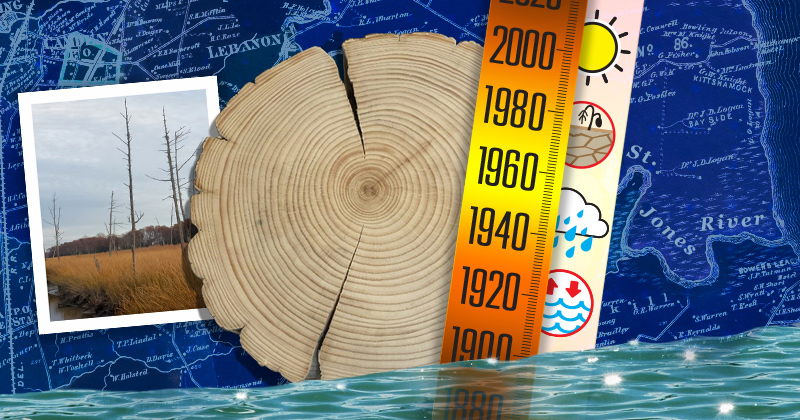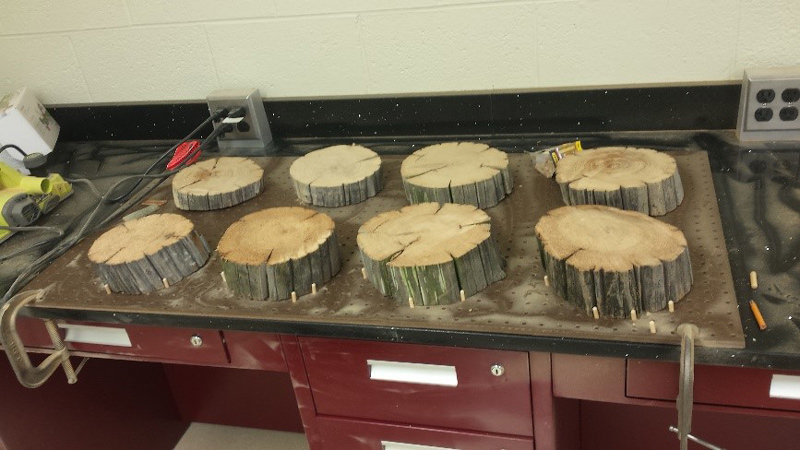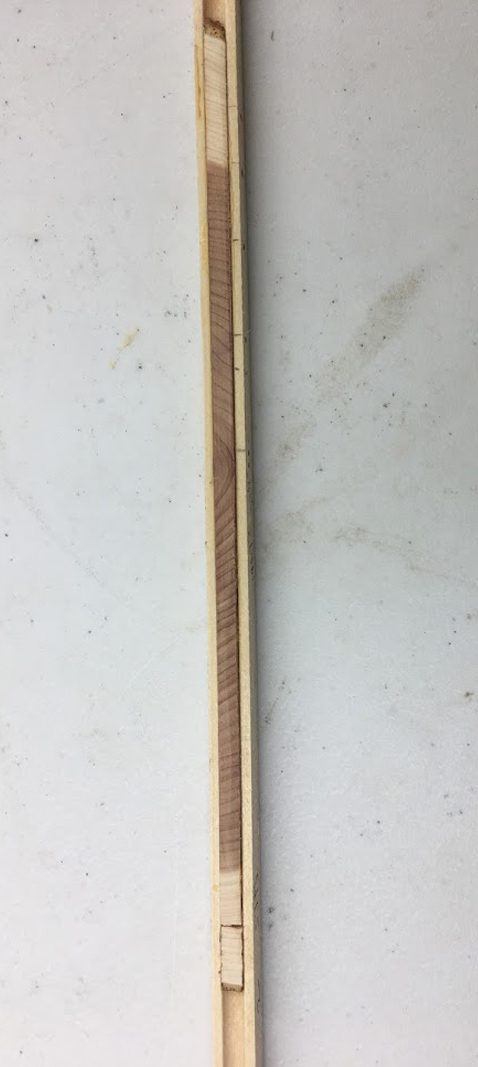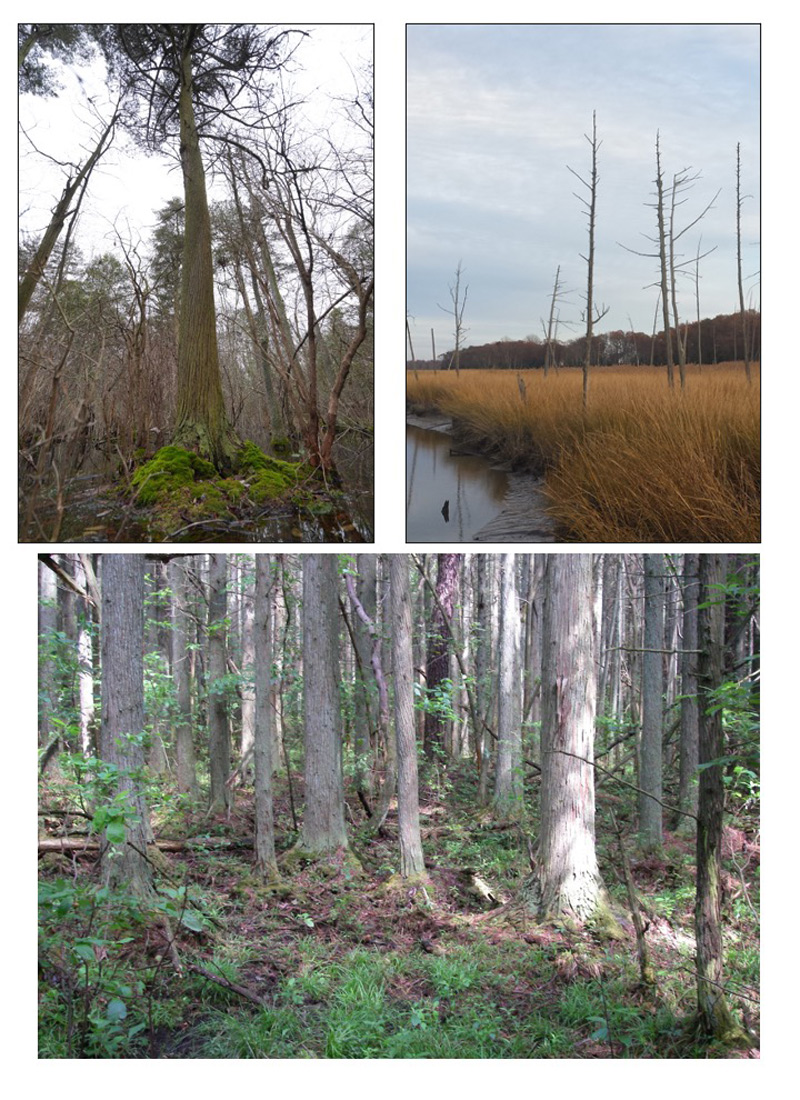


Mystery trees
Graphic by Tammy Beeson | Photos courtesy of Stephanie Stotts July 06, 2021
Study looks to uncover what killed Atlantic White Cedar trees on the St. Jones River
Atlantic White Cedar trees were once prominent on the East Coast of the United States. Previously known as green cypress, Atlantic White Cedar trees were such a presence in Delaware that they lent their names to roads — such as Cypress Bridge Road in Kent County — and sections of river — such as the Cypress Branch, a small tributary of the St. Jones River.
Today, however, due to a combination of natural processes and sea-level rise, as well as logging and other human activities, less than one fourth of Delaware’s Atlantic White Cedar Trees that stood in 1972 remain. In that particular stretch of the St. Jones River to which they gave their name, only two or three living Atlantic White Cedar trees still stand.
It is unknown exactly how these trees perished, but a new study involving researchers at Wesley College and the University of Delaware tried to determine if the mystery could be unraveled —investigating exactly when the trees died and if the dredging and straightening of the St. Jones River early in the 1900s hastened the process.

Stephanie Stotts, associate professor of environmental studies at Wesley College who earned her doctorate in geography from the UD’s College of Earth, Ocean and Environment (CEOE), was the lead author on the paper. Co-authors included John Callahan, an associate scientist with the Delaware Geological Survey who earned his doctorate in climatology from the UD’s College of Earth, Ocean and Environment, and Olivia Gulledge, a graduate student researcher at Wesley College and an environmental specialist with the Maryland Environmental Service.
Straightening the channel
Stotts said the impetus for the project came during a trip she took with the National Estuarine Research Reserve on the St. Jones River. On that trip, she saw the striking dead Atlantic White Cedar trees standing out in the marsh like ghosts.
“Our guide explained, ‘When the channel was straightened, the salt water moved and all these trees died,’ ” said Stotts. “That got me curious and so we started looking into it and doing some investigating — looking in the archives to figure out exactly when the channel was straightened. We’re still not 100% sure, but it was sometime between 1921 and 1926.”

During that time in the 1920s, the channel was straightened and dredged which allowed brackish water to move upstream. The Atlantic White Cedar trees began to die off in the 1930s to the 1950s.
Cedar is a very rot resistant wood, so even though the trees have been dead for a long time, many are still standing.
To see if there was a correlation in the straightening of the channel and the death of the trees, the researchers compared the growth of the trees to climatic data such as temperature, precipitation, and the drought severity. They looked at the trees in a pre-disturbance period, from 1895-1920, and a post-disturbance time period, from 1928-1958.
“We found differences in the climate-growth relationship between the before-straightening and the after-straightening time periods,” said Callahan. “Our belief is that the straightening put additional stress on the trees, and then either storm events or drought events, or a combination of the two, is what we believed killed these trees.”
Ring counting
To determine the age at which the trees died, Stotts and Gulledge travelled to the study site and took core samples from 11 of the dead trees. This allowed them to look at the tree rings to determine their ages.

They ran into a problem, though, of having living specimens to compare the samples against, as Atlantic White Cedar has become so rare in Delaware, there are very few left in the wild. Delaware State Botanist Bill McAvoy was able to tell the researchers where they could find living specimens in Delaware.
“We went out and sampled those living trees, but it turns out that the ones that are alive now only germinated about the time the river was straightened in the late 1920s so there wasn’t enough overlap with ours,” said Stotts.
Luckily, the researchers were able to use the International Tree Ring Database to download a tree ring dataset from a coastal setting in New York with dates ranging from the mid-19th to the mid-20th century to compare with their own samples.
Callahan explained that regularly you can work backward to determine the age of a living tree. When you take a core from a live tree, you know that the last tree ring was from the current year or the year before — so you count the rings to get the age of the tree.
“For dead trees, you can’t do that because you don’t know the exact year in which they died,” said Callahan. “So we used this reference tree stand, looked at the width of those tree rings and the patterns of the live trees and matched it up to our dead trees. Once we matched up our dead trees with the live tree chronology, we could figure out the birth and death years of our dead trees.”
All of the trees in the study were shown to have died prematurely. While the average Atlantic White Cedar tree typically lives to be 200 years old, the oldest tree sampled in this study was 67 years old. On average, the trees were only 50 years old.
The trees also died within a relatively short amount of time compared to one another, and tended to die in years that had hurricanes or large storm events — which may have caused the salt water to move further inland toward the trees.
“By deepening and changing the hydrology of this local area, it helped hasten or increase some of the detrimental effects that we see from natural causes,” said Callahan. “This hydrologic engineering, the actual straightening and deepening of the river for navigation purposes may have benefited transportation and trade at the time, but it had a negative impact on the coastal forests.”
Stotts said she hopes that future work using isotopic analysis and other scientific methods may provide more definitive evidence regarding the timing and impact of salt exposure with regard to dredging, growth response and tree mortality.

Contact Us
Have a UDaily story idea?
Contact us at ocm@udel.edu
Members of the press
Contact us at 302-831-NEWS or visit the Media Relations website

